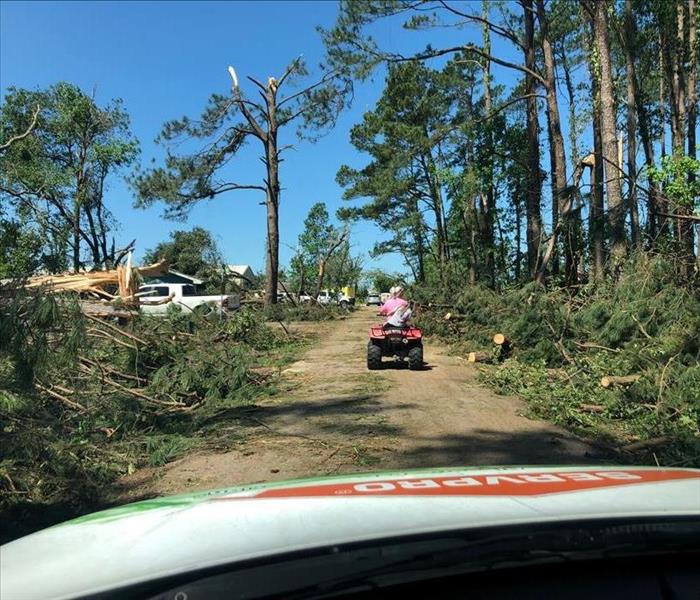Navigating April Weather
4/3/2024 (Permalink)
 Navigating this storm-damaged community was difficult, but I am glad SERVPRO of Lufkin/Nacogdoches was here to help.
Navigating this storm-damaged community was difficult, but I am glad SERVPRO of Lufkin/Nacogdoches was here to help.
Staying Prepared for Texas' Unpredictable Conditions
April in Texas often brings a mix of beautiful spring days, sudden storms, and even the occasional severe weather event. As temperatures rise and the season transitions, it's crucial to stay vigilant and prepared for any weather emergency that may arise. In this blog post, we'll explore some tips for staying aware of weather emergencies in Texas during April.
1. Stay Informed:
One of the most important steps in weather preparedness is staying informed about current conditions and potential threats. Utilize weather apps, local news channels, and official sources like the National Weather Service to stay updated on weather forecasts and any advisories or warnings issued for your area.
2. Know the Signs:
Familiarize yourself with the signs of severe weather, including darkening skies, strong winds, hail, and sudden temperature changes. Tornadoes, thunderstorms, and flash floods are common weather hazards in Texas during April, so knowing how to recognize the warning signs can help you take swift action to protect yourself and your loved ones.
3. Have a Plan:
Develop a comprehensive emergency plan for your family or household. This plan should include designated meeting places, emergency contacts, evacuation routes, and procedures for seeking shelter during severe weather events. Practice your plan regularly to ensure everyone knows what to do in case of an emergency.
4. Prepare an Emergency Kit:
Assemble an emergency kit containing essential supplies such as non-perishable food, water, medications, first aid supplies, flashlights, batteries, and a battery-powered or hand-crank radio. Keep your kit in a readily accessible location so you can grab it quickly in the event of a weather emergency.
5. Stay Connected:
Stay connected with your community and neighbors, especially during times of severe weather. Consider joining local social media groups or neighborhood networks to share information, offer assistance, and stay informed about any developments in your area.
6. Remain Calm and Stay Safe:
In the event of a weather emergency, remain calm and follow your emergency plan. Seek shelter in a sturdy building, away from windows and doors, and avoid driving or walking through flooded areas. Listen to local authorities and follow their instructions to ensure your safety.
Conclusion:
As April unfolds in Texas, it's essential to remain vigilant and prepared for whatever weather may come our way. By staying informed, knowing the signs of severe weather, having a plan, and staying connected with your community, you can help ensure the safety and well-being of yourself and your loved ones during unpredictable weather conditions.
Remember, it's better to be over-prepared than caught off guard. Take the necessary steps now to stay weather-ready and resilient in the face of April's ever-changing weather patterns.
Stay safe, and call SERVPRO of Lufkin/S.Nacogdoches County if you need help (936) 559-0404.






 24/7 Emergency Service
24/7 Emergency Service